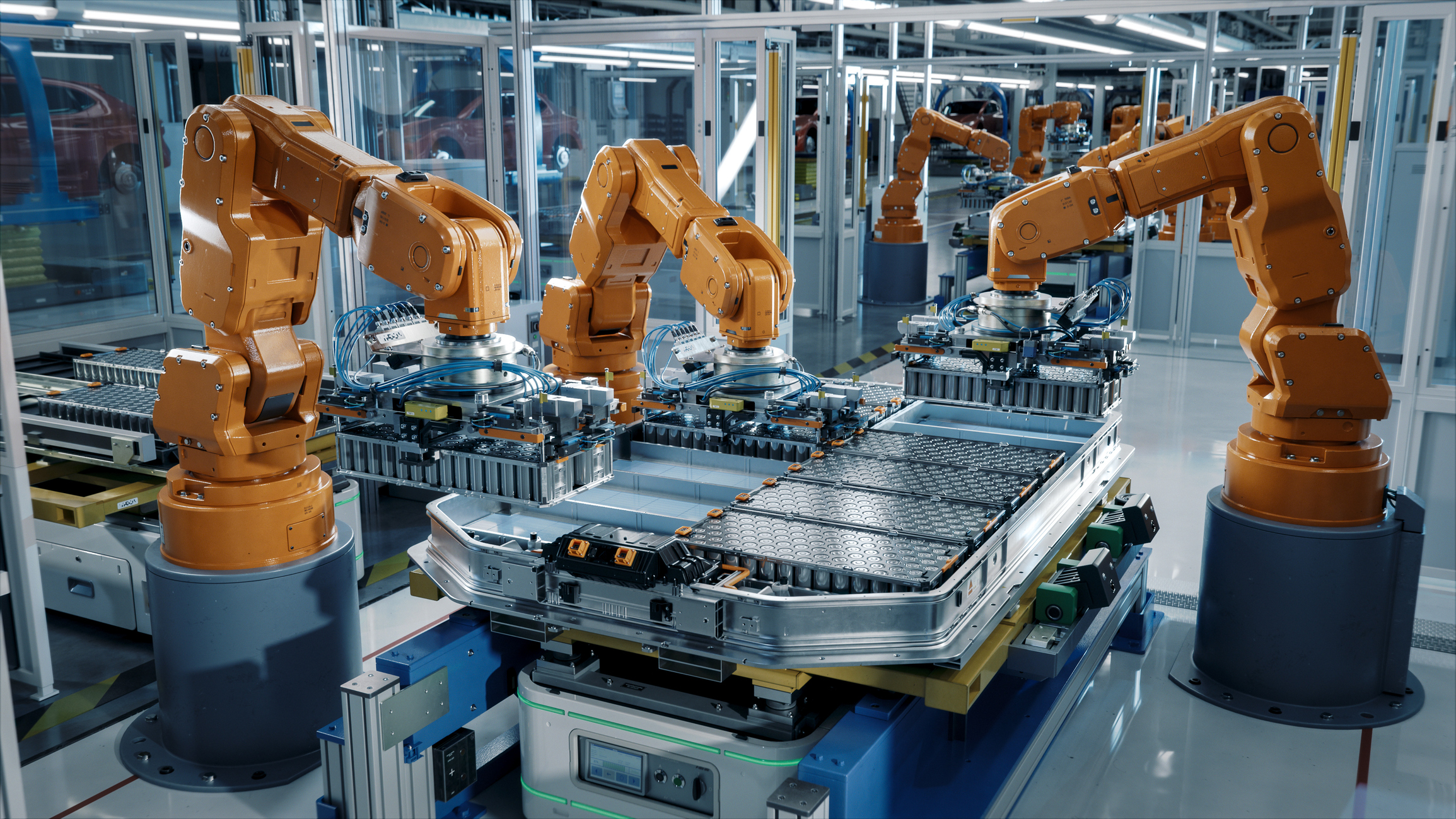The European automotive industry is undergoing a period of profound transformation, within a highly competitive global context. Although there is frequent talk of crisis, it is important to differentiate between real difficulties in the industry and narratives that risk exaggerating the perceived risk of its decline. Though the challenge should not be underestimated, it is important to remember that in recent years, European manufacturers have reported record profits and paid extraordinary dividends to their shareholders. These results cannot be seen as a “swan song,” especially when considering that, at the same time, companies in the sector have invested hundreds of billions of euros in innovation and shifting production towards electric vehicles. These investments have been, in part, made possible by the foresight and stability of European policies, which have helped minimise delays compared to competitors. However, it is clear that the European automotive industry’s historic leadership position is now being challenged.
In response to these new challenges, the European Commission is launching the “Strategic Dialogue on the Future of the European Automotive Industry,” involving manufacturers, suppliers, energy and charging infrastructure operators, social partners and civil society. The objective of this dialogue is to develop a shared action plan aimed at revitalising the sector’s competitiveness within the framework of European policies to decarbonise road mobility.
Absolute priority: technological innovation
According to Brussels, one of the most critical elements for the future of the European automotive industry is technological innovation. In fact, technologies such as new generation batteries, advanced software and autonomous driving systems are becoming benchmarks for the competitiveness of the global automotive industry. These technologies, which define the future of mobility, represent an area where Europe struggles to keep pace with the United States and China. Batteries, in particular, need to offer improved performance in terms of durability and charging capacity, while also being more affordable and sustainable. Electric vehicle manufacturers are making significant investments in research and development to improve efficiency and reduce battery costs, but this is a lengthy and expensive process. Similarly, the increasing digitalisation and adoption of autonomous driving systems require substantial investments in mechatronics, advanced software and infrastructure to support innovations. This path demands considerable financial resources to support development plans that will enable businesses to play the game of competitiveness. The risk associated with investing in projects with lengthy development times is high, so it is essential to consider introducing supportive financial and regulatory tools, such as tax incentives or forms of public guarantees, to attract private investments and support research and development projects.
Another vital aspect of this Dialogue will focus on support for start-ups, which are often the pioneers in developing innovative solutions in frontier areas, such as batteries in the field of artificial intelligence. For these entities, it is essential to establish a regulatory framework that facilitates market entry and encourages their development, ensuring that resources are directed in a targeted manner.
Promoting research, supporting start-ups and creating an environment conducive to venture investments in cutting-edge technologies will be essential for ensuring that Europe remains competitive in an increasingly challenging global market.
Electric vehicles and the market
Transitioning to electric mobility is a necessary path to ensure the decarbonisation of road mobility. However, there are clear challenges in market acceptance that must be addressed in a timely manner. One of the most visible obstacles is the cost of electric vehicles in the short-term, which are still more expensive to purchase than combustion models. This higher cost acts as a deterrent for many consumers, despite the long-term savings in operating costs (lower fuel and maintenance expenses). To make electric vehicles more accessible, it is essential to work on two fronts: on one hand, reducing production costs through process innovations and economies of scale, and on the other hand, ensuring tax incentives and subsidies that can ease the initial burden for consumers. To date, incentives vary greatly across EU Member States, creating fragmentation in the market. To combat this phenomenon, the Commission advocates for coordinating and harmonising fiscal measures and incentives among countries, as well as expanding demand through public procurement to make the purchase of electric vehicles more accessible to a broader segment of the population.
Another critical problem within the electric vehicle demand market is the availability and adequacy of charging infrastructure. The diffusion of electric vehicles is closely linked to the presence of a widespread, reliable and fast charging network. Yet, in many European regions, infrastructure remains insufficient or poorly distributed, with urban areas better served than rural or peripheral ones. This imbalance risks limiting the adoption of electric vehicles, particularly for long-distance travellers. To address this, a joint effort among governments, energy companies and private operators is needed to accelerate the development of an interoperable, high-capacity charging network that can support the growing demand for electric mobility.
The Commission also proposes improving consumer-facing information to help people understand the benefits of electric mobility. In this regard, it is certainly useful to take action for more effective communication of the environmental sustainability of electric vehicles, such as CO2 emission labels, and the opportunities for economic savings over the life cycle of the vehicle. Manufacturers must also invest heavily in this type of communication.
Finally, another central element of the Dialogue concerns the strengthening of industrial collaboration to develop more affordable electric vehicles that can be accessible to a wider audience. This involves supporting joint initiatives between manufacturers, component suppliers and start-ups. Cooperation between the public and private sectors will be key to promote the research and development of advanced technologies that can be used on a larger scale.
A combination of tax incentives, a more extensive charging infrastructure, accurate consumer information and industrial collaboration policies will form the foundation for making electric mobility an accessible reality for all and accelerate the achievement of European decarbonisation goals, all while revitalising the sector’s competitiveness.
Competitiveness and production costs
From a stricto sensu competitiveness standpoint, one of the most urgent issues to address is the elevated cost of production factors, such as energy, labour and raw materials. In this respect, the European industry suffers a competitive disadvantage compared to Asian or American competitors. Europe, compared to other regions, pays higher prices for energy due to its dependence on imported fossil fuels. One priority, therefore, will be to accelerate the shift to renewable energy production. Furthermore, measures will need to be considered to improve energy efficiency in production processes, further reducing consumption and associated costs.
Another crucial aspect concerns the management of raw materials, particularly essential critical ones, for example, in battery production. Europe is highly dependent on imports of these materials, making it vulnerable to price fluctuations and supply chain disruptions. To mitigate these risks, the Dialogue will promote the recycling of critical materials by developing technologies and industrial processes that allow them to be recovered and reused from end-of-life vehicles. At the same time, strategic partnerships with countries that produce these raw materials will need to be strengthened to ensure stable and secure access, reducing supply risks.
Regarding labour, a key priority is to adapt workers’ skills to the sector’s new demands. With rapid technological progress, the skills required are continuously evolving. European companies must train a workforce capable of operating with advanced technologies, such as robotics, artificial intelligence and data management. This can be achieved through close collaboration between the industry and the public sector, with initiatives such as the establishment of specialised training academies that provide workers with the skills needed to operate in an increasingly technological and innovative environment. Additionally, it will be necessary to promote retraining programmes for current workers.
Maintaining and strengthening the competitiveness of the European automotive industry requires a holistic approach that addresses energy costs, promotes the circular economy, adapts workforce skills and integrates advanced technologies into production processes. Through a coordinated strategy and collaboration between the public and private sectors, Europe will be able to compete effectively in the global landscape while ensuring a just and sustainable transition to the mobility of the future.
Global competition and trade policies
The growing competitive pressure at the global level has led to the need for a stronger focus on the dynamics of trade relations and the promotion of fair competition among nations. Indeed, over the years, many countries have adopted particularly aggressive industrial policies, supporting their automotive industries with significant government subsidies. These financial incentives, combined with targeted industrial growth policies, have led to overproduction, particularly in China, posing the risk of generating a distortion in global markets. This phenomenon raises concerns about the impact such policies could have on the long-term sustainability of the European automotive sector. In this regard, the Strategic Dialogue promoted by the Commission aims to gather recommendations from stakeholders to integrate into the policy debate on international trade measures.
The Dialogue will also address the issue of direct investment from third countries in the European automotive supply chain. With the global expansion of value chains and the increasing interconnection between markets, it is necessary to establish criteria for foreign investments that do not penalise local supply chains, but instead strengthen them through knowledge transfer. In this context, it is essential to assess the implications of these investments and identify the most appropriate measures to encourage them without disrupting the balance of the internal market. Additionally, the European Commission wants to ensure that regulations on product origin, particularly for vehicles and automotive components, do not hinder the competitiveness of European companies. Rules regarding the origin of materials and the transparency of supply chains must be effective in promoting sustainability and transparency without penalising local industries operating in the Union.
There is also the issue of new emerging markets. Africa, Latin America and other regions are becoming increasingly relevant markets for the global dynamics of the automotive industry. These markets present new opportunities for European companies, but also new challenges in terms of competition. The Strategic Dialogue will assess how to navigate these challenges, ensuring that the same rules apply to both European and international manufacturers operating in these markets. This includes investigating trade policies in place within the different states and promoting fair regulatory obligations, for example in terms of environmental, social and governance (ESG) issues.
Regulatory simplification and standardisation
In a dynamic sector like the automotive one, businesses cannot afford to be slowed down by a rigid and fragmented regulatory framework. In this regard, the Dialogue aims to identify the most problematic and critical areas with the objective of proposing solutions to simplify the legislative framework, ensuring greater coherence, uniformity and compatibility between regulations without compromising their effectiveness and usefulness. Furthermore, the slow pace at which new regulations are adopted, combined with the risk of substantial changes to existing ones, creates uncertainties that businesses struggle to manage. The Dialogue therefore aims to introduce faster and more transparent mechanisms for approving regulations, allowing companies to easily plan their long-term investments and adapt quickly to new rules.
Alongside regulatory simplification, the Dialogue aims to promote greater autonomy for the sector in the internal organisation of its activities. In this context, one of the crucial aspects concerns the adoption of common technical standards among companies, such as for electric vehicle charging infrastructure and batteries. This could promote interoperability between systems and reduce the costs related to diversifying technology.
Simplifying the regulatory framework and promoting self-organisation are key steps to strengthening competitiveness. By creating clearer and more consistent legislation and greater collaboration among companies, it will be possible to accelerate the transition to electric mobility while maintaining European leadership in the sector at the global level.
Towards a coordinated support plan for the industry in transition
Through discussions with key stakeholders in the sector, guidelines should emerge for the development of a plan to support the European automotive industry, aligned with the European Union’s decarbonisation strategy. In this process, contributions from various sectors will help address other crucial issues for achieving shared objectives, which the Commission can consider in broadening its assessments and analyses.
The hope is that all parties involved focus on resolving the main obstacles that are hindering the full transition to electric mobility in Europe. In particular, the focus must be on harmonising policies and overcoming structural challenges that make it difficult to fully adopt advanced technological solutions.
In this context, it is vital to avoid confrontations that could weaken the effectiveness of common policies, removing from the Dialogue the call for interventions presented as “urgent”, but that are in reality unjustified, to modify the regulations on CO2 standards. The priority must be to align all actors around a shared vision and concrete actions, avoiding divisions that could compromise policy effectiveness and reduce the chances of successfully tackling the transition. Only a concerted approach, including a thorough analysis of the challenges and their possible solutions, will ensure that the transitioning European automotive industry emerges stronger and more competitive, along with Europe as a whole.
Photo by SweetBunFactory






